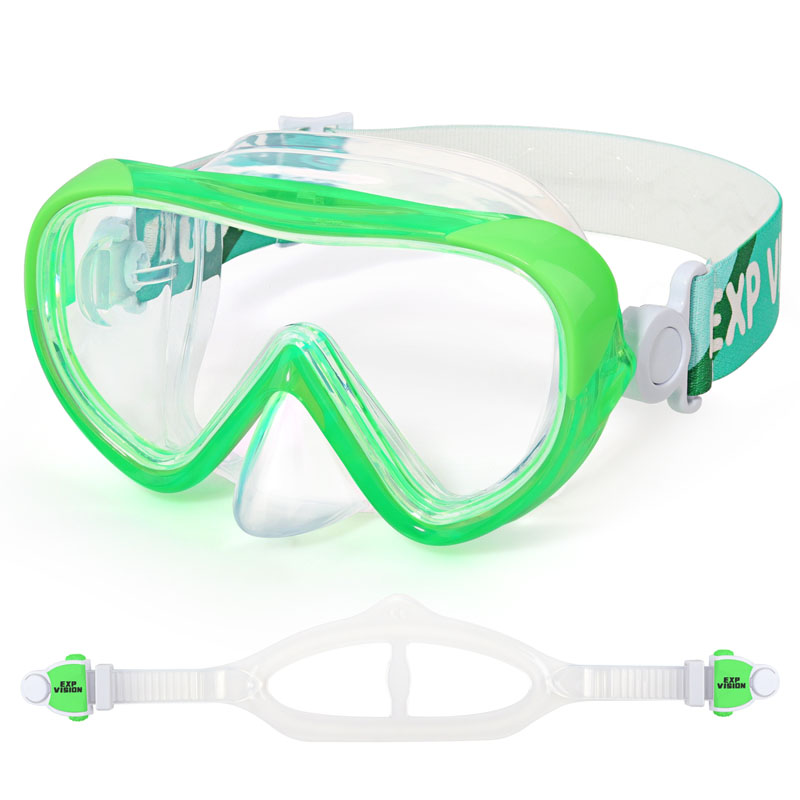Diving Mask: A Complete Guide to Choosing the Best One
2025-02-08
A diving mask is one of the most essential pieces of gear for underwater exploration, whether you're snorkeling, scuba diving, or freediving. It provides clear vision and protects your eyes from water while allowing you to enjoy the beauty of the underwater world. Choosing the right diving mask can greatly enhance your diving experience.
How Does a Diving Mask Work?
A diving mask creates an air pocket in front of your eyes, allowing you to see clearly underwater. It features a tempered glass lens, a silicone skirt, and an adjustable strap to ensure a watertight seal on your face. Some advanced models also include purge valves and prescription lenses for added convenience.

Key Features of a High-Quality Diving Mask
1. Tempered Glass Lenses
- Provides durability and resistance to pressure at greater depths.
- Offers crystal-clear vision underwater.
- Anti-fog coatings can prevent lens fogging.
2. Comfortable & Leak-Proof Silicone Skirt
- A soft silicone skirt ensures a tight seal around your face, preventing water leakage.
- Hypoallergenic silicone is ideal for sensitive skin.
3. Low Volume vs. High Volume Masks
- Low-volume masks sit closer to the face, making them easier to clear and providing a wider field of vision—ideal for freediving and spearfishing.
- High-volume masks offer a more open feel and are popular among recreational divers.
4. Strap Adjustability
- A well-designed strap system allows for easy tightening and adjustments to fit securely.
- Some masks feature quick-release buckles for added convenience.
5. Single Lens vs. Dual Lens
- Single-lens masks offer a wider, unobstructed view.
- Dual-lens masks allow for prescription lens customization and can be slightly lower in volume.
6. Purge Valve (Optional)
- Some masks come with a built-in purge valve, allowing you to easily clear water from the mask by exhaling through your nose.
Types of Diving Masks
1. Snorkeling Masks – Designed for surface swimming with a dry-top snorkel.
2. Scuba Diving Masks – Built for deeper dives, offering tempered glass and better pressure resistance.
3. Freediving & Spearfishing Masks – Low-volume masks for easy equalization and better vision.
4. Full-Face Diving Masks – Covers the entire face, allowing natural breathing through the nose and mouth.
How to Choose the Right Diving Mask?
- Fit Test: Place the mask on your face without using the strap, inhale slightly through your nose, and check if it sticks without leaking.
- Field of View: A wider lens gives better peripheral vision.
- Comfort & Seal: Ensure the silicone skirt seals properly on your face without pressure points.
- Lens Type: Consider anti-fog coatings and prescription lens compatibility if needed.
Mask Care & Maintenance Tips
- Rinse with fresh water after each use to remove salt, sand, and chlorine.
- Store in a cool, dry place, avoiding direct sunlight.
- Use anti-fog solutions or baby shampoo to prevent fogging.
- Check the silicone skirt and straps regularly for wear and tear.
Conclusion
A diving mask is your window to the underwater world, making it an essential investment for divers and snorkelers. Choosing the right mask based on fit, comfort, and features will ensure a more enjoyable and hassle-free experience.
Would you like recommendations for the best diving masks for beginners or professionals?

